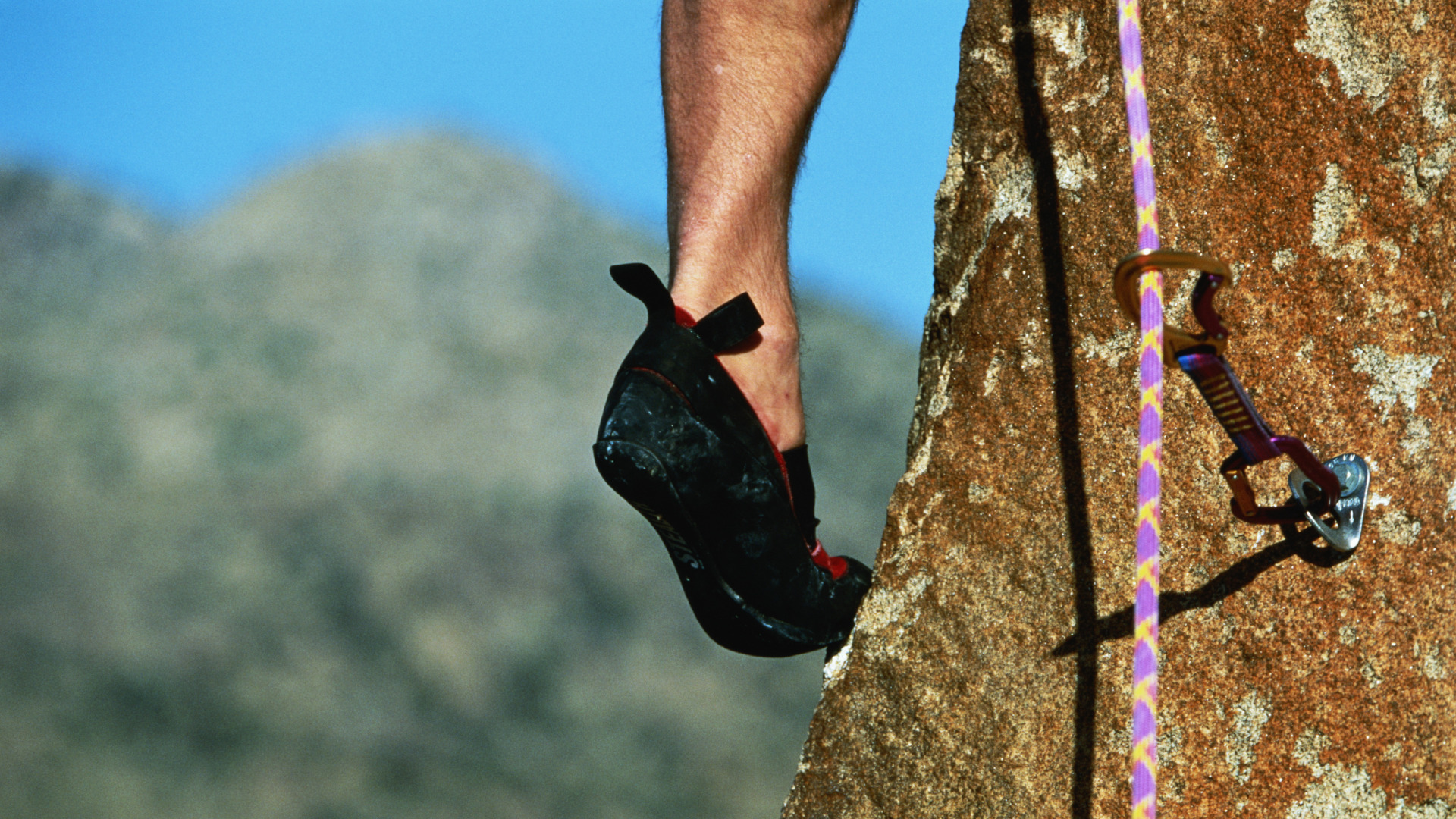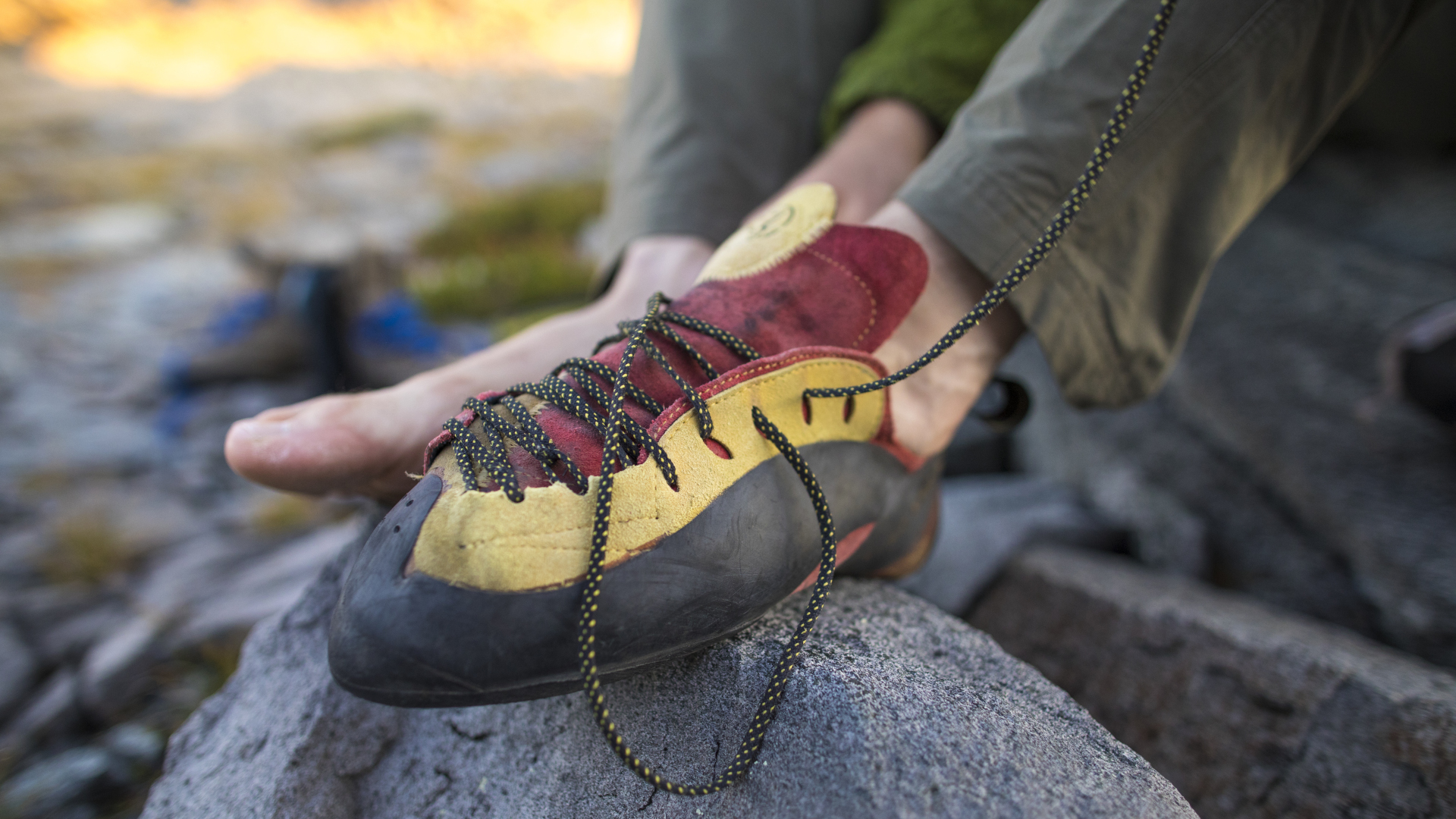How should rock climbing shoes fit? Busting the ‘no pain no gain’ myth
Properly fitting rock climbing shoes are key to climbing pain-free and staying on the wall

There’s a common myth among rock climbers that your climbing shoes should be so tight as to be painful, which is why most of us climbers have a too-small pair of climbing shoes hidden, barely-used, at the back of the wardrobe.
Rock climbing shoes look like a rubbery combination of plimsolls and ballet shoes, and fit tightly to your feet, which helps you to feel the holds and stick to them a bit better. Though it’s true that your climbing shoes should be tighter than a pair of dress shoes or hiking shoes, if you go too tight you won’t actually be able to do any climbing in them.
Rock climbing shoes aren’t a small investment, and you want to find a pair you can climb in for years, so we set out to answer the question: how should rock climbing shoes fit? If you’re new to rock climbing, be sure to also check out our guide to rock climbing for beginners.

Snug, not painful
Your rock climbing shoes shouldn’t be so tight as to be painful or to restrict mobility completely, after all you need those toes to grip when the holds get small. If your shoes are causing you pain, you won’t want to keep climbing, and worse you could end up with painful calluses or ingrown toenails.
What you’re really looking for in a rock climbing shoe is a snug fit, where there’s no extra space between your foot and your shoe. In non-beginner shoes, your toes will be ever so slightly curled under, which isn’t the most comfortable sensation. Generally speaking, you want your toes to be touching the toe box, your heel to be snugly encased, and the sides of your feet to touch the edges of the shoe (if your feet run narrow, seek a narrow size shoe).
Beware too much breathing room
On the other end of the spectrum, if your climbing shoes are a little too roomy, they’ll certainly feel more comfortable when you’re on the ground belaying your partner, but once you start climbing this can cause a problem. Space at the back of your shoe could cause it to slip off during a crucial heel hook, while space at the front could cause you to slip when you only have a narrow toe hold to begin with. Basically you want to feel like you are climbing barefoot, and able to use your feet to navigate the rock, without actually climbing barefoot. Any bunching or wrinkling once you start climbing is a good indication your shoes are too big.
All of that said, your feet do change in size, and tend to swell a bit when you’re climbing and in hot weather, so if you feel like there’s absolutely no room for expansion when you put your climbing shoes on at home, size up.
All the latest inspiration, tips and guides to help you plan your next Advnture!

Climbing shoe closure
Another factor that can change the fit of your climbing shoe is what kind of closure it has:
- Laces: rock climbing shoes with laces are the most versatile. If it’s hot or your feet swell up, you can loosen the laces, but if you’re on a difficult crag you can tighten them.
- Strap: lots of rock climbing shoes close with a velcro strap which is a little less versatile than than laces, but super convenient to slip on and off at the indoor climbing wall.
- Slip-on: slip-on climbing shoes have elastic enclosures and the absence of added bulk of laces or straps makes them ideal for crack climbing. They also offer better foot sensitivity.
Different routes require different fits
One other variable factor is what kind of rock climbing you’re doing. If you tend to do speed climbing on an indoor wall and can take your shoes off between climbs, you might sacrifice a little comfort for a really tight fit, but for a multi-pitch climb on a slab of granite, you’ll want to make sure they fit perfectly.
Finally, here are a few other tips for making sure your rock climbing shoes fit:
- Rock climbing shoes do stretch a little with use, so bear in mind that if they start out a little on the loose side, they’ll only get looser the more you use them.
- Different brands make different shapes and styles, so try on lots of pairs to know which brand works best with your foot shape.
- If you’re a beginner, go for beginner shoes which will allow your toes to lie flat rather than curl under.
- Keep in mind that as you get better at climbing and tackle more difficult routes, you may upgrade to a tighter shoe.
Julia Clarke is a staff writer for Advnture.com and the author of the book Restorative Yoga for Beginners. She loves to explore mountains on foot, bike, skis and belay and then recover on the the yoga mat. Julia graduated with a degree in journalism in 2004 and spent eight years working as a radio presenter in Kansas City, Vermont, Boston and New York City before discovering the joys of the Rocky Mountains. She then detoured west to Colorado and enjoyed 11 years teaching yoga in Vail before returning to her hometown of Glasgow, Scotland in 2020 to focus on family and writing.

